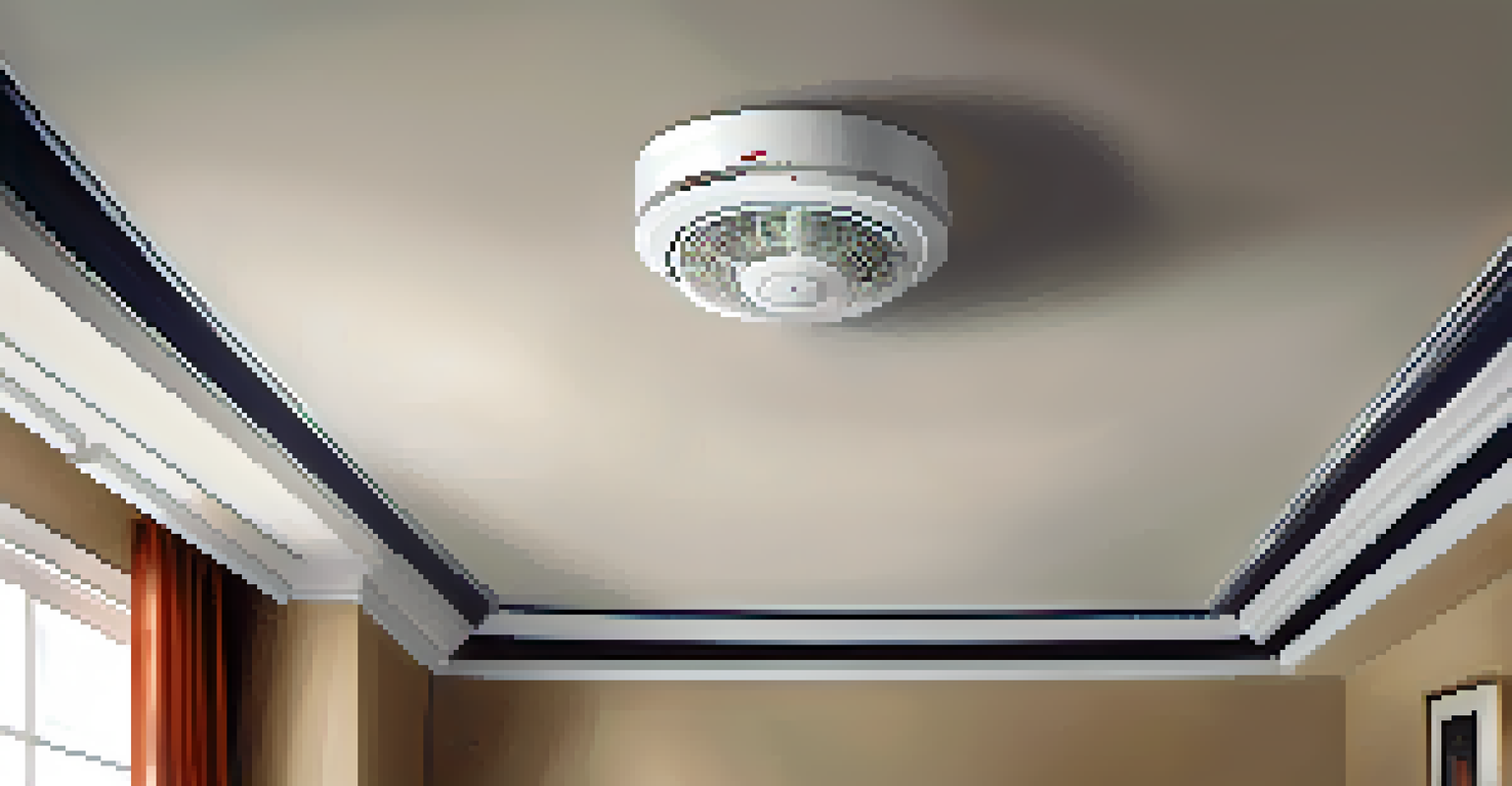How to Prepare Your Home for an Insurance Inspection

Understand the Purpose of the Insurance Inspection
An insurance inspection is a crucial step in the process of protecting your home. The insurer's goal is to assess the condition of your property and identify any potential risks. This evaluation helps them determine your coverage options and premium rates.
An ounce of prevention is worth a pound of cure.
Think of the inspection as a health check-up for your home, where every detail matters. Just like a doctor looks for signs of illness, the inspector will look for issues that could lead to costly claims later on. Understanding this purpose can guide you in preparing appropriately.
By being proactive and knowing what the inspector will be looking for, you can avoid surprises and ensure that your home is in the best possible shape. This preparation not only helps with the inspection but also gives you peace of mind.
Gather Necessary Documentation Ahead of Time
Before the inspector arrives, it’s wise to gather all relevant documentation about your home. This includes your insurance policy, previous inspection reports, and any warranties for major appliances or systems. Having this information organized can streamline the process.

Imagine walking into a meeting with all your documents neatly arranged; it shows preparedness and professionalism. Similarly, presenting your documents can help the inspector understand your home's history and current condition better.
Understand Inspection Purpose
An insurance inspection assesses your home's condition and identifies risks, guiding coverage options and premiums.
Additionally, if there are any recent upgrades or repairs, have receipts or records handy. This can positively influence the inspector's assessment and potentially lower your insurance premium.
Conduct a Thorough Walkthrough of Your Home
Take the time to walk through your home and identify any areas that may need attention. Check for water damage, cracks in the walls, or anything that might raise a red flag during the inspection. Addressing these issues beforehand can save you time and stress.
The best way to predict the future is to create it.
Think of yourself as the inspector for a moment; what would you notice? This perspective can help you identify potential problems that could affect your insurance coverage. Fixing these before the inspection can lead to a smoother process.
Moreover, it’s a good opportunity to perform routine maintenance, like changing air filters or cleaning gutters, which can contribute to the overall health of your home. A well-maintained home not only impresses the inspector but also ensures safety for you and your family.
Make Necessary Repairs Before the Inspection Day
Once you've identified any issues, prioritize making necessary repairs before the inspection day. This could range from fixing leaky faucets to ensuring smoke detectors are functioning properly. A little effort can go a long way in the eyes of the inspector.
Consider this like sprucing up before hosting guests; you want everything to look its best. By taking care of repairs, you're not only enhancing your home's value but also showing the inspector that you care about its condition.
Prepare Documentation and Repairs
Gather necessary documents and make repairs before the inspection to present your home in the best light.
Moreover, addressing repairs can prevent potential claims in the future. A home that appears well-maintained is less likely to attract scrutiny and can lead to better insurance terms.
Clear Clutter and Create Accessible Spaces
A cluttered home can hinder the inspection process and make it difficult for the inspector to assess your property thoroughly. Take time to declutter areas such as attics, basements, and garages. Creating accessible spaces allows the inspector to do their job effectively.
Think of it like showing a friend around your home; clearing pathways ensures they can appreciate your space fully. When the inspector can easily navigate your home, it leads to a more efficient inspection.
Additionally, ensuring that all areas are accessible highlights your commitment to home maintenance. It shows that you respect the process and are serious about protecting your property.
Ensure Safety Features Are Up to Code
Safety features are a top priority during an insurance inspection, so it's crucial to ensure they are up to code. This includes checking smoke detectors, carbon monoxide detectors, and fire extinguishers. A home that prioritizes safety not only protects you but also impresses the inspector.
Consider safety features as your home's first line of defense. Just like wearing a seatbelt in a car, these features can prevent accidents and save lives. When they are functioning properly, you demonstrate a commitment to safety.
Ensure Safety Features Are Functional
Check that all safety features are up to code, as they are crucial for both protection and potentially lowering premiums.
Moreover, having up-to-date safety installations can sometimes lead to discounts on your insurance premium. It's a win-win situation for both you and the insurance company.
Review Your Home's Exterior and Landscaping
Don’t forget about the exterior of your home when preparing for an inspection. Inspect the foundation, roof, gutters, and any outdoor structures like fences or sheds. A well-maintained exterior can significantly influence the inspector's overall impression.
Think of your home’s exterior as its first impression, much like meeting someone new; you want it to be inviting and in good shape. Address any issues like overgrown bushes or cracked walkways that may pose risks.

Additionally, consider how landscaping affects drainage around your home. Proper drainage can prevent water damage, which is a significant concern for insurers. A well-thought-out exterior can enhance your home's value and insurance attractiveness.
Prepare for the Inspector's Arrival on the Day
On the day of the inspection, make sure to be available and prepared to answer any questions. It's helpful to walk the inspector through your home, pointing out any improvements or repairs you've made. This can foster a sense of trust and transparency.
Think of it as hosting a guest; you're guiding them through your space and sharing its story. Being present allows you to address any concerns the inspector may have on the spot and clarify any misunderstandings.
Lastly, remember to stay relaxed and positive during the inspection. Your attitude can influence the inspector's experience and perception of your home, making for a smoother process overall.